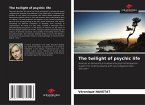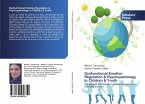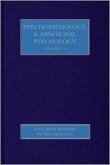In this book, we investigate how, from a critical-psychoanalytic viewpoint, different modalities of expressions of suffering nowadays, commonly manifested under the psychiatric diagnosis of anxiety disorder, can be read. These pictures of emotional suffering are understood to represent changes in the subjective organizations of the culture, as a constant presence of pressure for performance and the lack of capacity for symbolization, and, therefore, also reflect a greater presence of psychic structures divergent from the traditional neurotic model. the traditional neurotic model of Freud's time in contemporary clinical practice. clinical practice. Thus, it is important to observe how these changes would take place, in in a way aligned to a discursive mode in which psychiatric guidelines predominate, to later, review in Freud's work and in Winnicott, the theoretical-clinical constructions about psychopathology centered on expressions of anguish and anxiety, aiming to point to the importance of opening possibilities of clinical management that accommodate divergent psychic structures from the traditional neurotic structure.
Bitte wählen Sie Ihr Anliegen aus.
Rechnungen
Retourenschein anfordern
Bestellstatus
Storno








